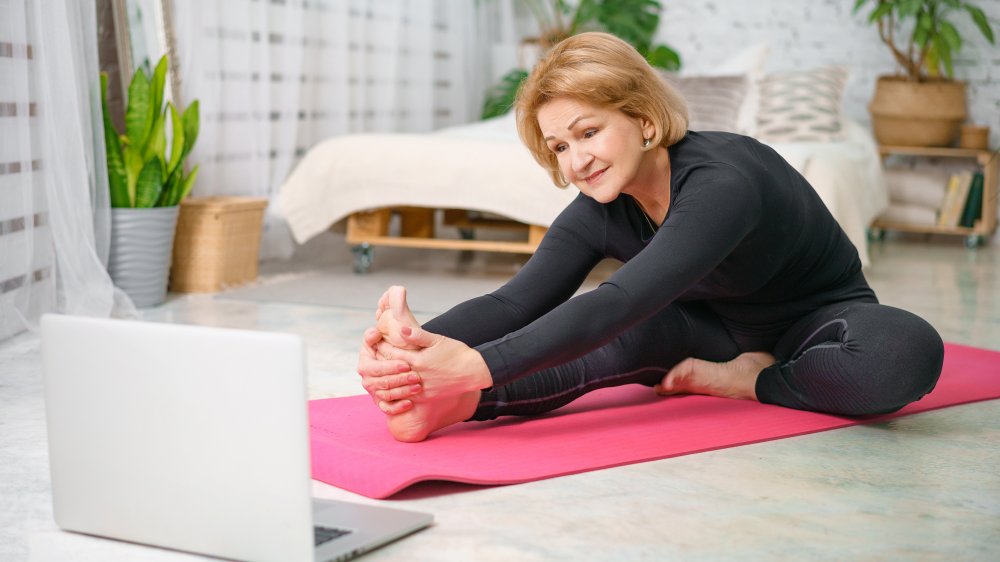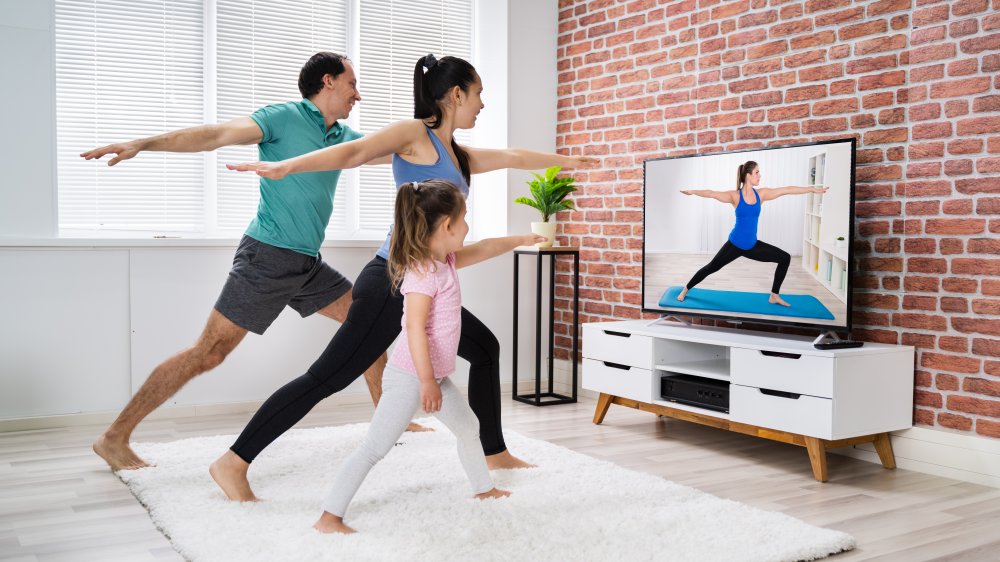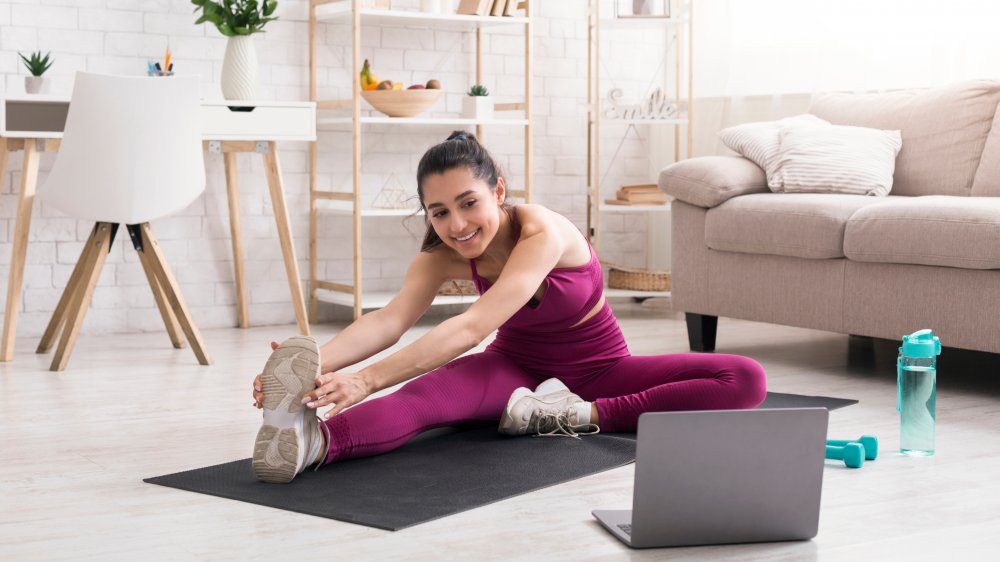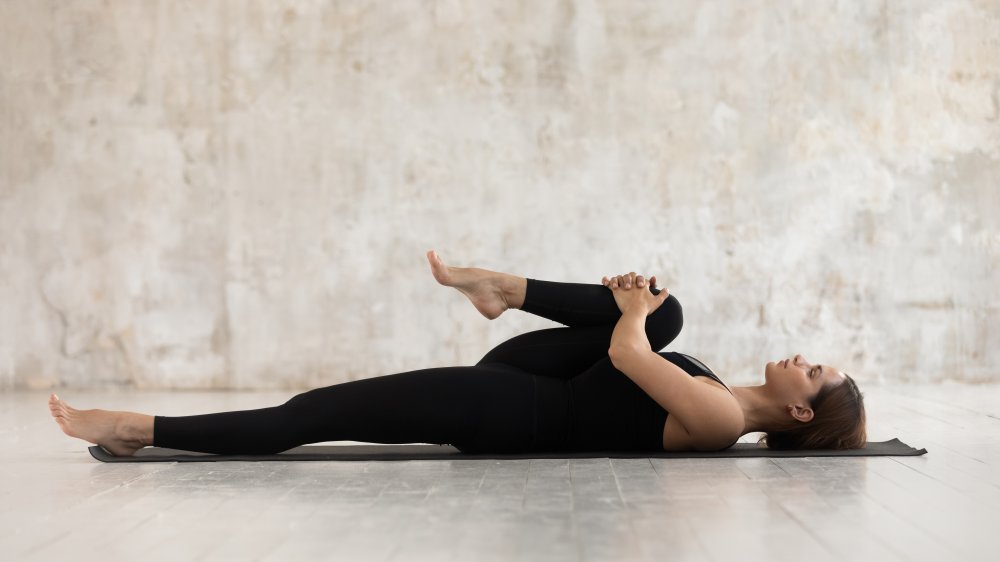When You Stretch Every Day, This Is What Happens To Your Body
Stretching is more important than you think. In fact, "Flexibility exercises are just as important as cardio, strength and power training," Ben Svendsen, Level 3 CrossFit coach and co-owner of Red Sun CrossFit, revealed to Forbes. And there are endless reasons why — starting with pain prevention.
"Tight muscles can cause undue strain on the neighboring joints during normal daily function, or they themselves can become injured," Sasha Cyrelson, D.P.T., clinical director at Professional Physical Therapy in New Jersey, explained to SELF. "We need to take an active role in maintaining and improving the length of our muscles so we can continue to enjoy our abilities without pain." But what happens to your body when you stretch every day? Are you doing your muscles more harm than good?
According to the celebrity fitness coach, Kollins Ezekh, "When you stretch, you're improving blood flow in the body and, in turn, circulating more nutrients throughout the body." Speaking to Forbes, he added, "It's [also] a great way to give yourself a mental break, to recharge and calm the mind." Ultimately, daily stretching can improve your physical and mental health. Sign us up!
Daily stretching can improve your posture and, more importantly, your health
When it comes to improving your physical health, stretching daily does much more than just prevent pain and injury and improve flexibility. It also improves posture. "Stretching can act as an antidote to the positions and postures you've taken all day," Vancouver-based yoga teacher and massage therapist Anne Jones told Refinery29. And these positions and postures you put yourself go beyond sitting at your desk all day. Think about all the time you spend looking down at your phone or the specific position you sleep in (that might-not-be-so-good-for-you back).
And you can expect to see changes in your body quickly. "After just three weeks of regular stretching you can see a noticeable difference in how someone holds themselves, how upright they are and how their head, neck and shoulders sit in relation to each other," Lexie Williamson, author of The Stretching Bible, explained to the Daily Mail. She also refers to a study conducted by the University of Milan that found three months of stretching every single day could actually "prevent heart disease, stroke and other cardiovascular conditions.
Stretching every day improves mental health and clarity
Stretching is very much considered a form of exercise, so just like running, cycling, and walking, it benefits your mental health and is a great stress reliever. If you've ever wondered why so many people are obsessed with yoga, the stretching side of it is probably why. "When you stretch, your brain produces endorphins that help you to relax," Jeff Brannigan, program director of stretching studio Stretch*d, explained to GQ.
But according to Ayla Tse, a yoga instructor at Pure Yoga, stretching every day can also help you think more clearly. "Stretching makes you more flexible not just in your body, but in your mind," she told the South China Morning Post. "Chances are if your body is rigid and stiff, you're rigid in your thinking, you're rigid in the way you approach problems," she continued, adding "I really believe there is a link between your body being open and flexible, and being open and flexible in your life." Stretching does sound life-changing, indeed.
Stretching every day is only beneficial if you are using the correct technique
Mental and physical health aspects aside, it's important to know there is a right and wrong way to stretch. And you're not going to reap the physical and mental benefits of daily stretching if you're doing it incorrectly. Ask a professional for guidance or follow reputable online fitness videos online to ensure you're not wasting your time. Tse's top tip is to take it slowly at first. "Ease your way into it," she told the South China Morning Post. "There is such a thing as being too flexible. Some people try to push it and try to do crazy stretches right away, which is very dangerous. Make sure you master the correct forms of the stretches and just enjoy the process."
If you don't know where to start, begin with your lower body. "The areas critical for mobility are in your lower extremities: your calves, your hamstrings, your hip flexors in the pelvis and quadriceps in the front of the thigh," David Nolan, a physical therapist at Harvard-affiliated Massachusetts General Hospital, told Harvard Health Publishing. However, if you're a desk worker, you might want to start with your back and shoulders — remember, every body is different.



